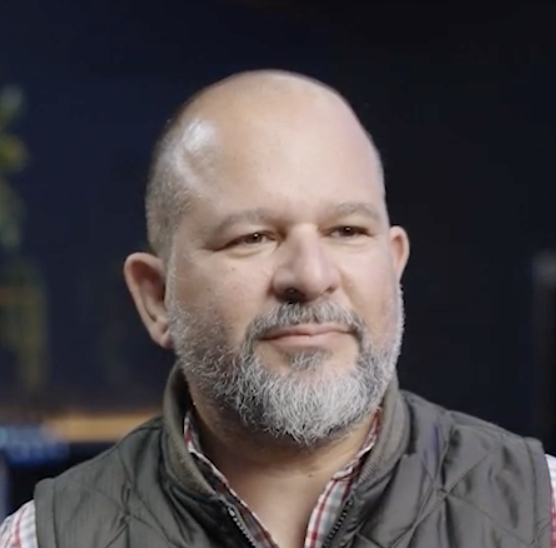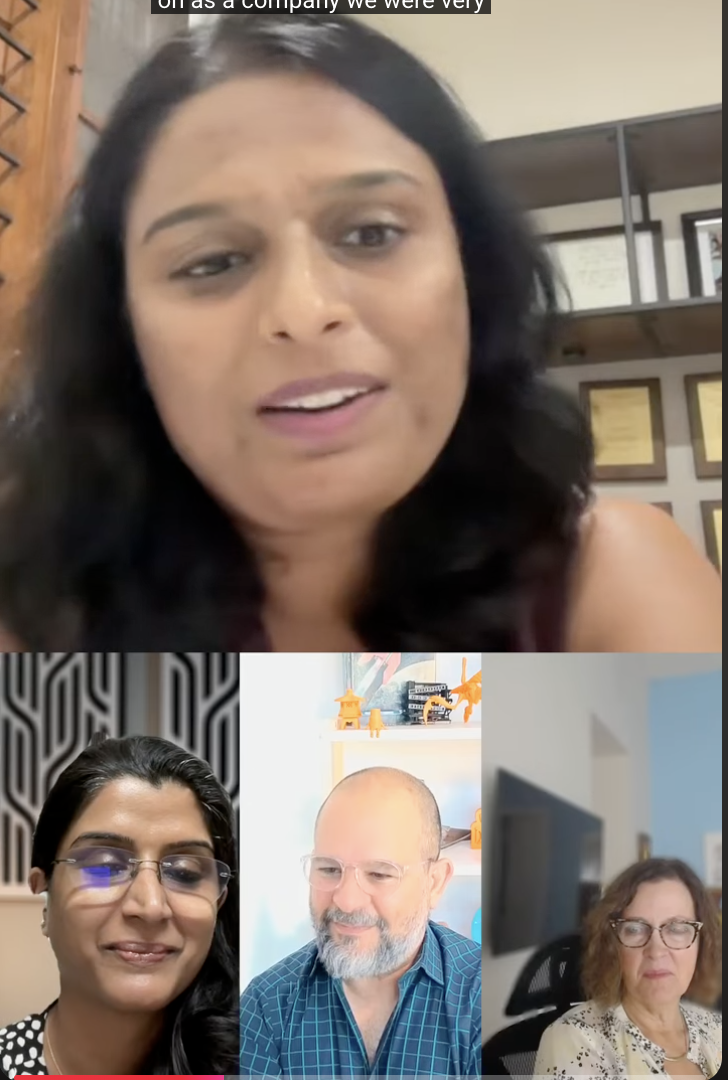
When Purpose Meets Precision: Building the Headlamp Way
super{set} Company Building Spotlight: Erwin Estigarribia, CEO and Manaswini Sugatoor, Co-Founder & Head of Technology, Headlamp
On clarity, trust, and building deep tech that truly serves patients
In a world where speed often overshadows substance, Headlamp stands out for doing things differently. The company was conceived out of a deep technical problem that sits at the intersection of patient care, data accuracy, and human trust. In conversation with the super{set} team, they share how they’ve built Headlamp with precision and patience: tackling complex problems with empathy, creating space for learning, and ensuring that the technology they build always serves its true north, the patient. What follows is a reflection on their journey so far, and the mindset that continues to guide them as they gain market traction and scale.
Q: Headlamp solves a deep technical problem. What was the original spark?
That moment when you realized this pain was big enough to dive in and build a company to solve this?
Manaswini: When Headlamp was first pitched to me, what resonated most was the space itself. The problem was real, the impact was real. And the very thought that if we got this right, even by a little bit, we could touch thousands of lives - that itself gave me goosebumps.
From a technical point of view, mental health is a data story. I wouldn't say mental health lacks data. There is a lot of data, but it is fragmented and it lies in silos. We have behavior data, biology data and they are noisy and messy. And all of these are knowledge systems on their own. They have their own terminology, ontologies, and each needs its own interpretation. What we are trying to do is bring all of this together in a cohesive way for our patient, at one place, over time.
With the recent advancements in AI, I really believe that the timing is so good. We have the right tools in place and this is only accelerating our vision towards precision psychiatry. I'm really bullish about the agentic reasoning system that we are building on top of this unique data vehicle.

Erwin: Exactly. The space is full of fragmented data, sometimes hiding in plain sight. But how do you reason? What can you query? What can you learn from that? And how does that impact how a clinician is practicing medicine? How a researcher is trying to develop a new drug? Or how a patient is trying to have their immediate needs be met?
What we've learned, really by doing, is that the ability to save years of frustration for patients, clinicians, researchers, is not only impactful, but it's a spot that really hasn't been addressed. Hence the kind of accumulated layers of frustration by everybody involved in the space. And that's where Headlamp, pun intended, shines.
Q: Over the last two years, what was the single biggest problem you’ve had to solve?
And how did you tackle it as a team? What did it teach you about resilience or ownership?
Manaswini: I think the hardest problem for us was not about KPIs or chasing metrics or running fast. In mental health, we are not measured by how many millions of downloads you had or installs you had or how many active sessions you have with users. It's more about how many lives you touched, how many moments were made safe, how many people felt heard and seen.
Building that right, getting that right, was more important than at what pace you're going. And that mindset-building with culture and getting the right people - we needed a deeply technical team to solve this problem who could work cross-functionally across life sciences, data, and design to build beautiful experiences. But at the same time, they need to really have that empathy for the space and feel connected with the purpose. I really enjoyed solving this with everyone around and being surrounded by like-minded people who feel the same about it. That, I would say, was unique about this journey.

Q: How did you help your team build the muscle of pure grit?
There must have been a time when the team had to show pure grit as part of Headlamp’s DNA — fast pivots, or wrestling ambiguity into clarity.
Erwin: Having built teams throughout my career that are collaborative but come from very diverse backgrounds - having a translational medicine scientist try and solve a problem with a software engineer or an ML or an AI engineer - just speaking the same language to define the problem is already a big hurdle.
So we spend a lot of time just trying to define problems, but building that muscle memory. I love physical activities and having fun with team building. We have several activities that allow us to demonstrate how to have your teammates' back, how to communicate nonverbally when possible, how to measure cadence of a team and individuals. One person running at a thousand miles an hour and everybody being left behind is not a great solution. How do we manage that cadence so that we can all arrive at the finish line at the same time?
Q: How do you create a space where engineers & operators keep learning?
Not just about the product, but about themselves?
Erwin: What we do is we focus on this external third entity, which is the problem that we're trying to solve. We really encourage everybody to bring their experiences, their educational background, orthogonal thinking and problem solving. But at the end of the day, it's the team that solves for the best answer. That's another thing that we're really big on - not what is the right answer. The right answer is perhaps not applicable even just one day from today. And so instead of having us recreate a solution that is based on a discipline only, we tend to round that out with individuals, their collective experience, and bring them together.
Q: How have shared learnings shaped your decisions or leadership mindset?
Manaswini: From setting up the India entity in the beginning with super{set}, it was a lot easier because you have these playbooks and a lot of resources to get started. And being a first-time co-founder, that was really helpful for me because I came from a larger company mindset, and I had to do all those things from the ground up. I had other co-founders who had already done this a couple of months before or six months before me, so they could help me out.
And once you're set up, the next journey is more about, as you go through these ups and downs, it's a roller coaster ride. The Hive is full of energetic entrepreneurial co-founders. We are all solving problems in different spaces using the same technology. When things are going south, you could always talk to a colleague and see they saw light at the end of the tunnel. That gives you support and says, "Hey, hang on. You'll get there." It always helps.
Q: How do you complement each other in practice?
Especially in moments of tension or tradeoffs? What have you learned about trust and communication building side by side?
Erwin: I think that takes time, but there's a huge level of respect that you have to have with the people that you work with. The winning strategy for us is when you're able to externalize the problem that you're solving. It's not about Manaswini having the right answer, or me coming up with a better answer. Both of us are fostering and growing and solving something together.
We're constantly asking each other, "What do you think about this?" That enables us to stay sane and not all just shake our heads and say, "Yeah, that sounds good." We're able to challenge and push back. Even if it's something simple, it gives you the ability to step back and say, "Hang on. I've made this decision 7,000 times, the exact same way. Is there an opportunity to do something different, more creative here?"
Because we are leaning towards speed, but for us, we have to be mindful that there are real people on the other side. Somebody not using our service really has a huge impact on their loved ones, the overall community, and health economics overall. And so we take that very seriously.
Q: What are tangible things to reinforce your values — “Patients First” and “Own It”?
More than just words on a wall?
Erwin: We integrate as much as we can our values into internal presentations, in our senior and all-hands meetings. Each meeting is themed after one of our values, and we kind of highlight how that tracks back to it. And we constantly challenge that.
Manaswini spearheaded the initial set of values for the company, and we've evolved in the last 12 months as we think about scaling and as we think about new problems that we have to solve, kind of beyond what's in front of the patient. It's not static, it's a living document.
Q: For 2026, what’s something about Headlamp you’re fiercely protective of ?
Something you don’t ever want to lose, no matter how big you get?
Erwin: I'm kind of giggling because it's not even the end of this year and I'm doing a look back and thinking, wow. To provide some context, I didn't think that we would be in a position to really deliver AI-based answers to researchers and clinicians and to patients for probably another 18 months. And so we're here today. That's huge. That's a massive gift. Now, the gift didn't come on its own—a lot of hard work. Where most companies slow down during the summer months, we actually sped up. Significantly.
What I never want to lose? Creativity in problem solving. That's one of my main things. I've scaled companies before and some things you have to let go of because scale just doesn't lend to it or starts being inhibited. But I think one of our ethos advantages is to be able to solve problems very creatively. Scale can kill that if you're not careful. That's something worth protecting.
Q: If you had to choose one value that feels most essential to Headlamp right now, what would it be? Do you think everyone on the team would name the same one?
Manaswini: It would be Act with Purpose. And that's mostly because from early on as a company, we were very clear on what we are not. We were clear we are not any other data AI company that will just capture data or be hungry for data. We knew that we are not just another chatbot company.
Saying no to certain things has always worked out well for us and we still continue doing that. Now we are at this crucial stage where it's more important to focus with blinders on, to do more with less and also not do things that are not important. I think this value is going to help us make those decisions on a daily basis and stay grounded to where we started and why we started.
Tech, startups & the big picture
Subscribe for sharp takes on innovation, markets, and the forces shaping our future.
Let's keep in touch
We're heads down building & growing. Learn what's new and our latest updates.


